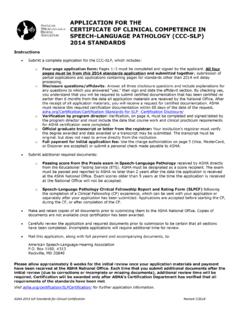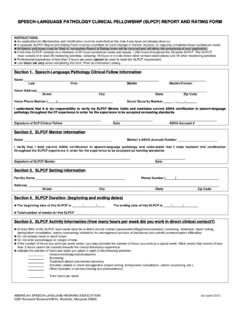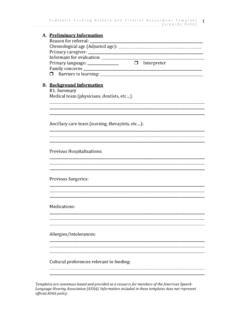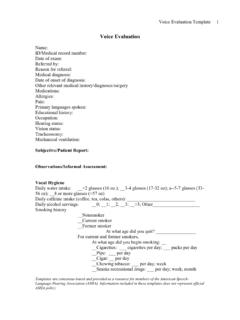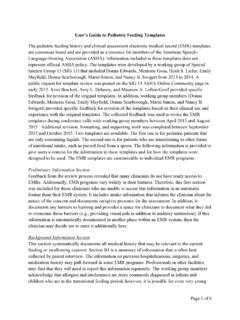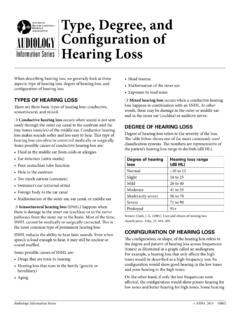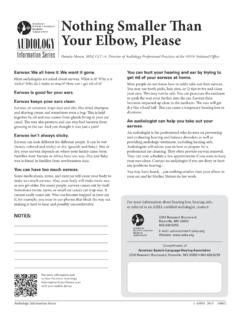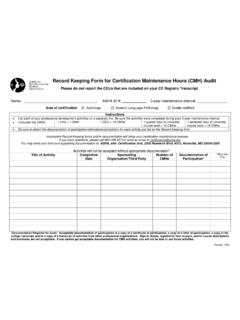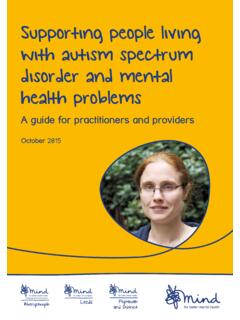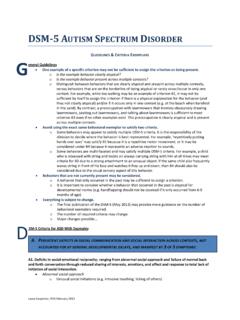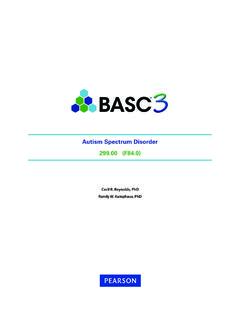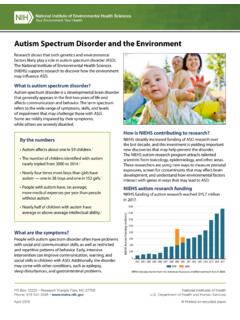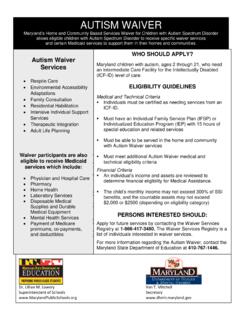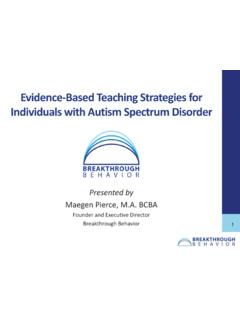Transcription of Sample Intervention Goals Based On Core Challenges In ...
1 Sample Intervention Goals Based On Core Challenges In autism spectrum Disorder Prelinguistic Stages Emerging Language Stages Advanced Language Stages Social Communication Joint Attention Orienting toward people in the social environment Responding to a caregiver's voice Shifting gaze between people and objects Pairing communication gestures with gaze and/or physical contact when requesting and protesting as culturally appropriate Directing another's attention for the purposes of sharing an interesting item or event Attending to emotional displays of distress or discomfort Sharing positive affect Initiating social routines Expanding communication functions to seek specific emotional responses from others ( , seeking comfort, greeting others, showing off) Commenting to share enjoyment and interests Recognizing and describing emotional states of self and others Understanding what others are indicating with gaze and gestures Determining causal factors for emotional states of self and others Using emotions of others to guide behavior in social interactions ( , selecting topics Based on another's preferences, praising others, sharing empathy) Considering another's intentions and knowledge ( , requesting information from others, sharing information about past and future events)
2 Social Reciprocity Responding to the bids of others Initiating bids for interaction Increasing frequency of spontaneous bids for communication Developing persistence in communication attempts Increasing frequency of communication across social contexts and interactive partners Maintaining interactions by taking turns Providing contingent responses to bids for interaction initiated by others Recognizing and attempting to repair breakdowns in communication Engaging in topic maintenance ( , providing expansion comments) Maintaining conversational exchanges with a balance between comments and requests for information Providing essential background information Initiating and maintaining conversations that are sensitive to the social context and the interests of others Language and Related Cognitive Skills Using a range of gestures to share intentions ( , giving, showing, waving, pointing) Using effective strategies for protesting, exerting social control, and emotional regulation in order to replace potential problem behaviors used for these functions Pairing vocalizations with gestures to share intentions Observing and imitating the functional use of objects Turning pages and pointing to pictures in books Expanding word knowledge and use to include not only object labels, but also action words, modifiers, and relational words Understanding and using more creative combinations of words Understanding and using more sophisticated grammar Engaging in representational play Understanding sequences of events in stories, attending to beginning and rhyming sounds, and naming alphabet letters Producing a variety of speech sounds Enacting social sequences in a representational manner by incorporating themes or modifications introduced by others (.)
3 Role-playing and visualizing an event before it takes place) Understanding and using nonverbal gestures, facial expressions, and gaze to express and follow subtle intentions ( , sarcasm and other nonliteral meanings) Understanding and using intonation cues to express and follow emotional states Understanding and using more sophisticated syntax to provide background information for one's listener Understanding and using more sophisticated syntax to show relationships between sentences in conversational discourse Demonstrating story grammar knowledge, decoding, and letter sound correspondence and expanding literacy skills ( , reading comprehension and written expression) Problem solving, self-monitoring, goal-directed behavior ( , executive functioning) Behavioral and Emotional Regulation Attending to salient aspects of the social environment Expanding the use of conventional behaviors to regulate one's emotional state ( , covering one's ears to block out noise, carrying a preferred toy into an unfamiliar setting to assist in the transition, removing oneself from a situation when overwhelmed) Protesting undesired activities Requesting a soothing activity when distressed Requesting a break from a given activity Requesting assistance from others Using language to maintain engagement within an activity ( , first.
4 Then ) Using language to talk through transitions across activities Expressing one's emotional state and the emotional state of others Preparing and planning for upcoming activities Perceiving one's actions within social events and predicting social behavior in others in order to self-monitor Negotiating and collaborating within interactions with peers


